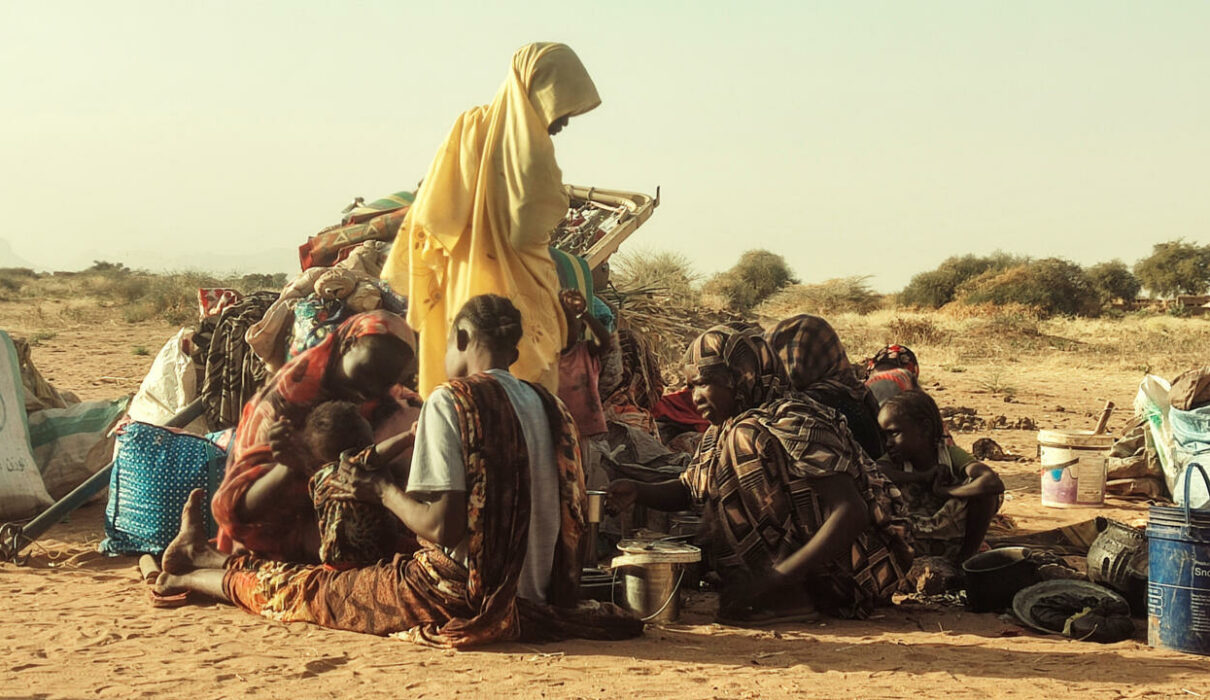Part 2
Part I: Anatomy of an Atrocity – The Mechanics of a Massacre
Strategic Objective
The RSF’s assault on Zamzam and Abu Shouk camps was not random chaos; it was a tactical operation, planned and executed with military precision. Intelligence intercepted from local sources suggests that RSF leaders viewed these camps as both:
- Strategic obstacles to their advance on El Fasher, and
- Population centers harboring resistance sympathizers, particularly from the non-Arab Zaghawa and Fur tribes.
This deliberate framing allowed them to justify what would otherwise be unjustifiable — the direct targeting of civilian populations.
Assault Details
- April 10, 2025, early morning: RSF technicals and drone units encircle the western and southern perimeters of Zamzam camp.
- By midday: Coordinated mortar barrages and drone strikes begin. Witnesses describe “flames leaping from tent to tent as though the fire had a mind of its own.”
- RSF soldiers, many in stolen SAF uniforms, enter the camp with orders to “flush out dissidents.” Instead, they open fire on civilians, execute suspected informants, and set ablaze entire blocks of makeshift shelters.
A former aid worker, now in Chad, stated:
“I saw them shoot a pregnant woman trying to flee with her child. There was no military target. It was pure terror.”
Part II: Human Cost and Humanitarian Collapse – A City of the Dead
Casualties and Psychological Scars
- Over 200 confirmed dead; actual numbers likely higher due to mass graves and missing persons.
- Women and children made up the majority of casualties. MSF reports at least 34% of surviving children are now severely traumatized, displaying signs of PTSD, night terrors, and shock paralysis.
- RSF soldiers deliberately mutilated bodies — a tactic meant to sow terror and signal domination, particularly to ethnic groups resisting RSF control.
Destruction of Aid Infrastructure
- The Relief International medical clinic was not caught in crossfire — it was explicitly targeted.
- First, drones struck the roof.
- Minutes later, RSF fighters entered and executed remaining staff.
- Water tanks were poisoned or destroyed.
- Food silos, containing WFP aid rations, were set ablaze — effectively weaponizing famine.
Collapse of Humanitarian Presence
After the attack:
- Doctors Without Borders (MSF), IRC, and UNICEF suspended operations.
- Remaining NGOs went into “hibernation mode” — limiting operations to communication only.
- Disease broke out: cholera, diarrhea, and upper respiratory infections surged in the days following, with no medical treatment available.
Part III: A Legal and Moral Indictment – The RSF’s War Crimes in Focus
Geneva Convention Violations
The RSF’s actions violate multiple provisions of international humanitarian law:
- Common Article 3 of the Geneva Conventions prohibits “violence to life and person, in particular murder of all kinds, mutilation, cruel treatment, and torture” of civilians.
- Article 8 of the Rome Statute classifies the targeting of humanitarian personnel and the use of starvation as a method of warfare as war crimes.
- ICRC Customary Law Rule 156 confirms that direct attacks on refugee camps and aid workers constitute war crimes.
Gender-Based Violence
There is growing evidence that RSF fighters used rape as a weapon during the Zamzam attack:
- Survivors report gang rapes in front of children and elders.
- Several women have died due to untreated injuries.
- In Sudanese and international law, this is not just a war crime — it is a crime against humanity.
These acts also breach UN Security Council Resolutions 1325 and 1820 on the protection of women in conflict.
Part IV: International Response – A Deafening Silence Amid Outrage
UN and Global Inertia
- The UN Secretary-General condemned the attack and called for a ceasefire — but stopped short of naming the RSF directly.
- Attempts at a UN Security Council referral to the ICC were blocked by Russia and China, both suspected of having material or diplomatic ties to the RSF.
- Western powers (US, UK, EU) issued strong statements but have not moved beyond non-binding resolutions and temporary aid boosts.
Human Rights Advocacy and Grassroots Pressure
- Amnesty International and Human Rights Watch are documenting the attack as part of a broader file on RSF atrocities for potential ICC prosecution.
- Sudanese diaspora organizations in Europe and North America are demanding targeted sanctions, an arms embargo, and UN peacekeeping intervention in Darfur.
Still, no RSF commander has been indicted. The people of Zamzam remain voiceless in the corridors of international justice.
Part V: Political Motives and Ethnic Undertones – A Strategy of Ethnic Cleansing
Ethnic Dimension of the Conflict
The RSF, dominated by Arab tribal militias, has a history of targeting non-Arab African groups in Darfur, including the Zaghawa, Fur, and Masalit. The Zamzam attack fits a pattern of ethnic cleansing, including:
- Massacres in Geneina (West Darfur)
- House-to-house executions in Kereinik
- Rape camps and torture sites in Nyala
The strategic goal:
To depopulate non-Arab strongholds and replace them with loyalist tribes, solidifying RSF control over Darfur.
Foreign Involvement
- Weapons recovered from the site include Russian-manufactured Kalashnikov variants and drones matching Chinese commercial models.
- Intelligence leaks tie UAE logistics support to RSF drone operations in North Darfur — fueling accusations of foreign complicity in war crimes.
This complex web of alliances makes accountability difficult and reinforces RSF impunity on the global stage.
Conclusion: A Crime That Must Not Be Forgotten
The Zamzam massacre is more than another bloody chapter in Sudan’s war. It is:
- A direct insult to the international system of law and order.
- A test case for whether international justice means anything when victims are poor, African, and politically expendable.
- A call to action for every journalist, lawyer, activist, and policymaker who claims to stand for human rights.
If justice fails Zamzam, it fails us all.


